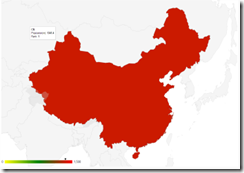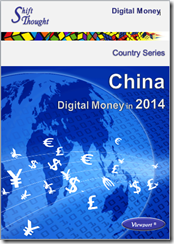In today’s guest post Sonum Puri of Accenture shares her thoughts on the opportunity in the MSME sector in developing countries and the gap in servicing their needs, reflecting on further work required for financial institutions to address these needs.
 Micro, small and medium enterprises (MSMEs) in developing countries face an estimated financing gap of $2.1 to $2.6 trillion ($3.2 to $3.9 trillion globally)[1]. MSMEs contribute to economic growth and job creation but inadequate access to finance, limits their impact in society.
Micro, small and medium enterprises (MSMEs) in developing countries face an estimated financing gap of $2.1 to $2.6 trillion ($3.2 to $3.9 trillion globally)[1]. MSMEs contribute to economic growth and job creation but inadequate access to finance, limits their impact in society.
MSMEs are impeded from accessing formal financial services due to cumbersome KYC and onboarding procedures, poor credit histories and lack of time to travel and queue at bank branches.
Some banks would argue that the processes applied to MSMEs are justified to mitigate high risks (creditworthiness is hard to denote) and as these customers are typically perceived as less profitable, no concerted effort is made to reduce constraints.
However, by failing to address the financial needs of this underserved segment, service providers are potentially missing out on a US$380 billion revenue opportunity[2].
Although microfinance institutions (MFIs) have helped close the credit gap, especially for women entrepreneurs, many do not have the resources, financing capacity and products beyond microfinance to meet the evolving needs of MSMEs (savings/deposits, insurance, pensions, remittances etc.)[3]. In fact some MFIs such as miBanco (Peru) and Bandhan (India) have turned into banks in order to diversify product offerings.
In developing countries, rising affordability of devices is encouraging growth in smartphone adoption, reaching 63% (2.9 billion) by 2020, with the majority running on mobile broadband[4]. Increasing smartphone and internet penetration will enable MSMEs ranging from a small business owner in the Philippines to a garment producer in Indonesia and a smallholder farmer in India to connect to a variety of online digital products and services by clicking a button.
Leveraging digital channels and operations will allow banks to also reduce the cost to serve the MSME market, whilst acquiring new customers and increasing profitability. Yet banks need a compelling digital value proposition, incorporating financial and non-financial needs that will help customers grow their businesses and improve their own welfare and that of their families.
The concept of the ‘Every Day Bank’[5] goes far beyond a transactional relationship to one in which banks will offer a variety of digital services that will increase the daily interactions of MSMEs. But to get to the ‘honey pot’ the sign up procedure needs to be online, fast and simple. Credit decisions need to take minutes, not days. Customers need to be able to conduct their business as efficiently and productively as possible.
Employing a low cost distribution model (using brick and mortar and digital infrastructures) will benefit both banks and MSME clients. Virtual contact centres, loan disbursements and repayments through mobile phones and point of sale (POS) equipped bank staff in addition to using retailers to expand distribution and perform basic banking/customer services, are some of the available options.
Social media platforms can assist banks to prove identity and make better informed credit decisions on customers who may not be regular banking users or have much of a financial track record, but are likely to be on Facebook and have a social media history. Based on the data generated, loan approvals can be turned around very quickly. Similarly mobile phone behavioural data can be utilized to assess credit worthiness.
Digital Services that can help address customer pain points include:
- Faster onboarding and KYC procedures (online forms, analytics/social media platforms, biometrics, digital signatures and electronic document transmission)
- Personalised financial services and reporting (pre-approved offers, third party lending analytics, online portal/digital relationship manager, digital supply chain financing and mobile cash pick up)
- Business administration tools (virtual CFO, single view of customer accounts, cash flow and expense management capabilities and analytical platforms for forecasting)
- Integrated banking experiences (ability to access services from any device, anytime and switch from one channel to another for account opening, banking products origination and servicing)
- Connecting to a broader ecosystem (B2B network hub, P2P collaboration tools and access to alternative financing)
- Solutions to improve products and services (business services and Ecommerce enablement and virtual platforms to gain industry insights and advice)
- Financial literacy programmes (mobile phone delivered education and training and videos)
The threat of competition from challenger banks, telcos and other disruptive players has led to some banks responding including:
- ANZ - mobile app to monitor real-time account balances, view current and prior-day transactions and approve or reject payments
- Maybank - mobile POS service that enables MSMEs to benefit from wireless payment to save time going to bank branches
- Barclays – remote account opening through an app on smartphones and tablet devices on which customers apply for a personal loan and receive funds in less than 10 minutes
- CBA – online balance statement, cash flow report and business insights that customers can use to benchmark with competitors
The more innovative banks are even joining forces with the new competition, take for example India’s ICICI bank working with Chinese Ecommerce firm Alibaba to establish an online trade facilitation centre or RBS who is partnering with Funding Circle (online lending marketplace) and Assetz Capital (peer-to-peer lending platform) to provide alternative financing sources.
Neither banks nor any other stakeholders can go it alone. To get to scale and truly build long standing relationships with the MSME segment, collaboration with a range of ecosystem partners is absolutely critical. Cross industry partnerships present an opportunity to offer complementary financial and non-financial products which service providers might not have been able to offer otherwise.
 Sonum Puri is a manager within Accenture's ASEAN digital team. Sonum is committed to helping banks, MFIs, other FIs, telcos, governments and donors use digital solutions to improve front to back end processes, increase operational efficiency and expand financial services in developing countries.
Sonum Puri is a manager within Accenture's ASEAN digital team. Sonum is committed to helping banks, MFIs, other FIs, telcos, governments and donors use digital solutions to improve front to back end processes, increase operational efficiency and expand financial services in developing countries.
Prior to joining Accenture, Sonum worked as a digital financial services consultant to the UN, providing advisory services to stakeholders creating new product innovations in digital financial services. She has conducted research and analysis, strategy development, agent/staff training and service implementations in the Philippines, Papua New Guinea, Timor-Leste, Sierra Leone, India and Kenya.
Sonum may be reached at sonum.puri@accenture.com.
References
[3] http://blog.microsave.net/should-microfinance-go-digital/
[4] http://www.gsmamobileeconomy.com/GSMA_Global_Mobile_Economy_Report_2015.pdf
[5] https://www.accenture.com/us-en/insight-everyday-bank-digital-revolution-banking-summary.aspx



